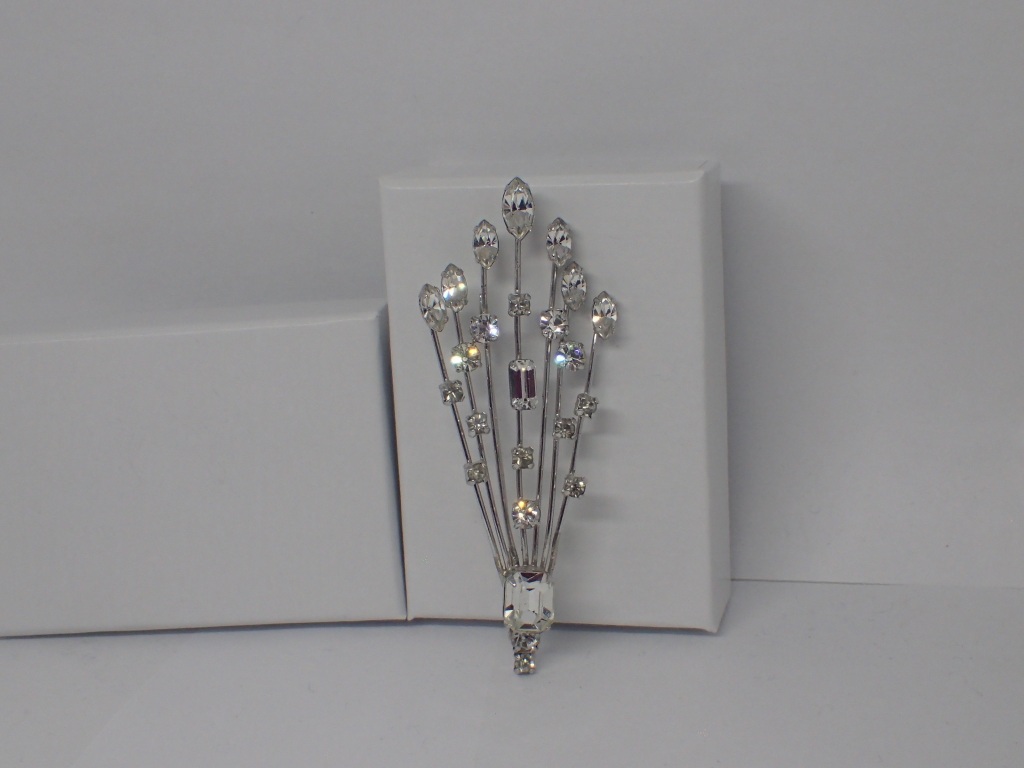Town & Country Magazine has it correct when they recently wrote that brooches are hot, and it’s not what most have a vision of when they think of grandma’s vintage and antique pins. I have long known, and the younger generations or those around my middle age who didn’t have it on their radar are starting to surprisingly discover, that vintage and antique brooches can be modern, adaptive, wearable works of art.
The historical anomaly that was the golden age of costume jewelry, a byproduct of trained fine jewelers gone rogue with more versatile, less expensive materials (Than say, the 14k gold, platinum and diamonds from the likes of Cartier, Van Cleef & Arpels, or Tiffany), raged from the 1920’s Art Deco design era through to the 1980’s super glam and Devo modernist productions of merger & acquisitions proportions, from designers like Nolan Miller of television’s Dynasty fame.
Within the decades of that fabled time, little masterpieces were homegrown, made in the USA, patented by highly skilled goldsmiths and silversmiths, with stones set by hand by a cottage industry of women and children, sitting at their kitchen tables, mainly near the Costume Jewelry Capitol of the World in Providence, Rhode Island.
My father of 87 years recalls neighbors and classmates (Woonsocket & Warwick, RI) working after supper, gluing and prong-setting rhinestones and crystals into gold plated, cast metal pieces, that were finely tooled and died by talented Italian designers and precision-centric Germans in Providence.
The result of their combined endeavors, working for the famous houses of every woman’s couture, namely Trifari, Coro/Vendome, Weiss, Eisenberg, Boucher, Krementz, Hobe, Jomaz, Kramer, Hattie Carnegie and Monet, created a body of work that women accessorized into a new art form.
Today, many of those classic and modernist pieces have boldly withstood the test of time, and women and men all over the world are clamoring for these precious commodities, with some Asians paying two to three times what US consumers are willing to pay.
As trends go, American women might want to shift their attention to this niche of our cultural heritage. These fabulous, miniature works of art hopefully will find many homes in the land where they were so fabulously created. I, for one, am hoarding them for generations to come.


